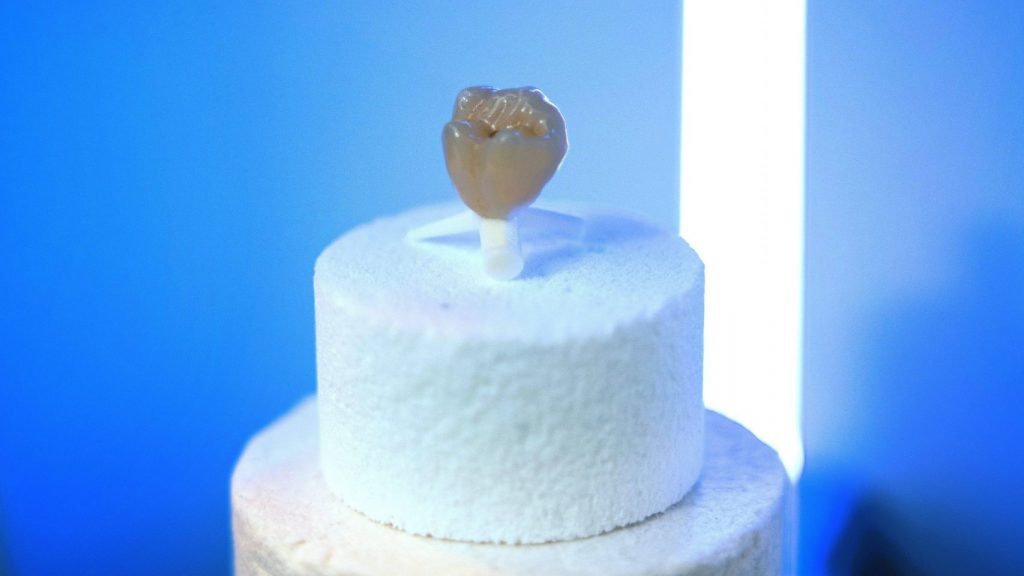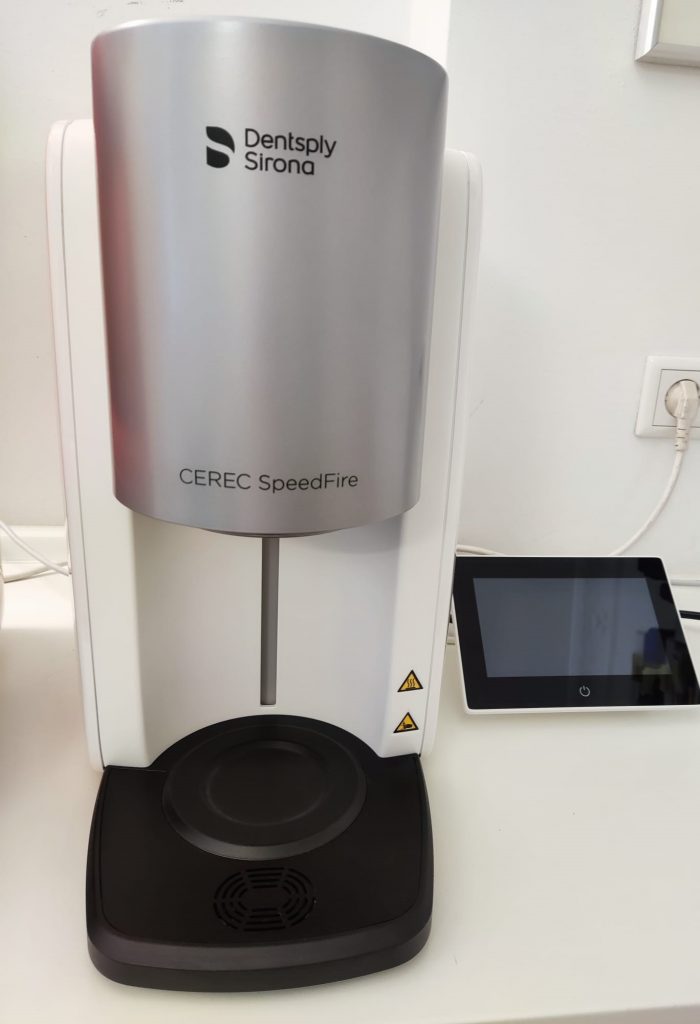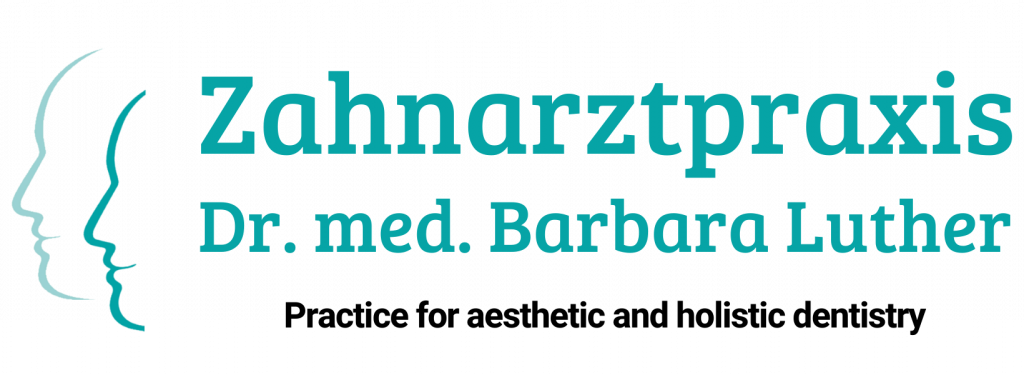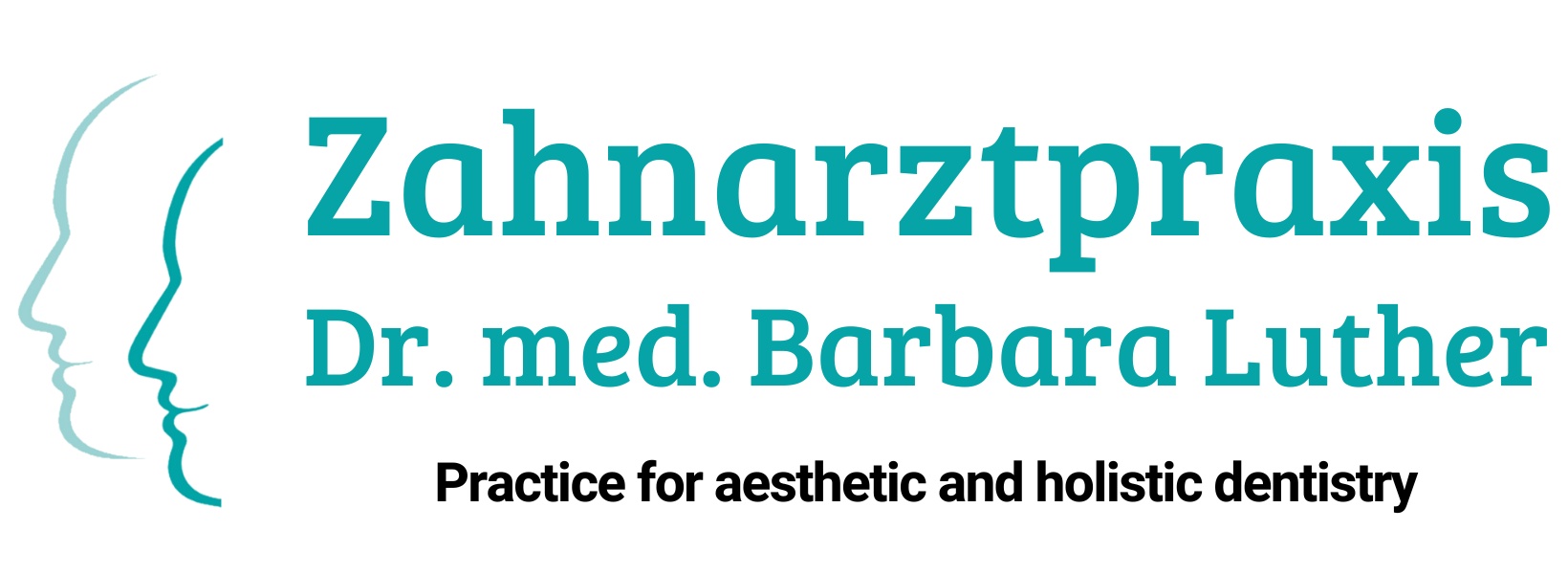Dentures
Dentures are more than just restoring a gap in a row of teeth to a closed one. Among other things, they provide excellent functional chewing comfort with an esthetic solution.
Dentures are not a luxury, but an absolute must!
As the entire set of teeth forms a unit with the whole body, even one missing tooth can have an effect on the entire organism. Dentures are not an off-the-shelf product, but each one is unique, manufactured in a specialized dental laboratory. After consultation and advice from us, you will receive a dental prosthesis made individually for you that has the best possible properties to fulfill your personal wishes.
Today, teeth mean much more to people than just grinding food. In every age group, teeth are important for communication, show an image of youthful charisma, social status and also stand for vitality and quality of life. For this reason, the imitation of natural teeth with dentures is becoming increasingly important in today’s world. It is not least due to the highly qualified manual skills of the dental technician, who uses his specialized equipment to produce dentures that are not recognized as such.
New, perfect dentures are made individually, are adapted to your oral conditions with the utmost care and give you back your security.
My aim is to only fit dentures that I would have fitted myself!

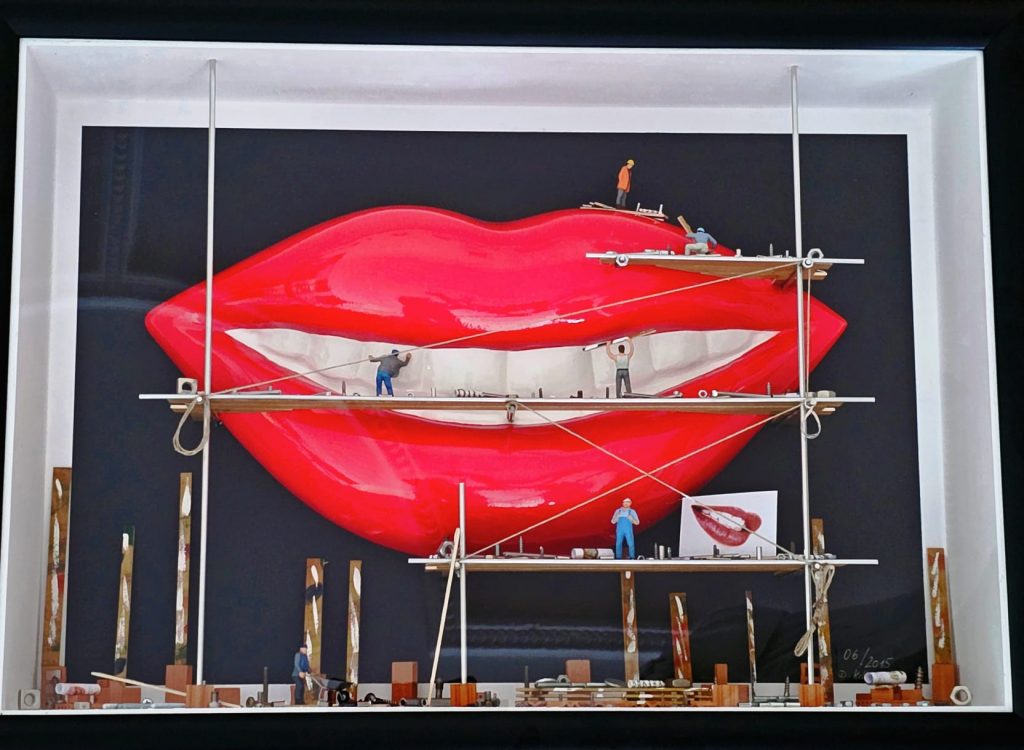
Dental health is not everything, but everything is nothing without healthy teeth or good dentures!
A day without teeth is a day lost!
Prostheses, crowns, bridges
Removable dentures
Fixed dentures
The different variations in the field of dentures make it possible to offer different dentures individually tailored to your dental situation and also according to your wishes and possibilities. Removable dentures are often sufficient to restore only the function of the masticatory system.
Decide together with us which of the different forms your dentures should take!
If you have any questions, we will be happy to advise you and are available for a personal consultation.
Prostheses
Removable, usually with bent clips
- reasonably priced
- not very comfortable
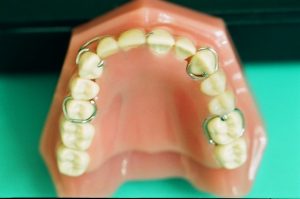
- have full palate coverage in the upper jaw
- hold due to suction effect (usually better in the upper jaw than in the lower jaw)
- fulfill their chewing function through special gnathological aspects
Advantage:
- cost-effective
Disadvantage:
- removable
- Improved measures for aesthetics and increased wearing comfort are not covered by statutory health insurance
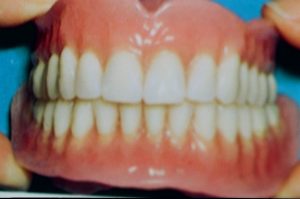
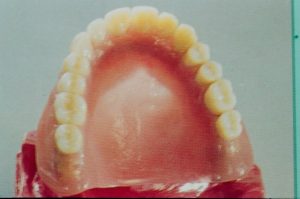
A somewhat more comfortable option for replacing lost teeth with remaining teeth are metal dentures (so-called model cast dentures), which can also be produced in combination (fixed and removable dentures). The connection between the two can again be of a different nature.
| with clamps, cast |   |
| with attachments |   |
| with cone / telescopic crowns |   |
| with bars |     |
| with implant abutments |    |
Removable bridges:
| with double crowns |   |
| with implant abutments |   |
Fixed dentures
If caries has already caused a major substance defect and hollowing, loss of cusps and dips have already occurred, such a defect is restored with a partial crown which can only be fabricated with a classic or digital impression.
Advantages
- Tooth substance protection due to preventive preparation design
- Long experience and excellent durability
- High-quality supply
- Long durability, high chewing pressure load
- are subsidized by statutory health insurance companies
- Can be used for the entire occlusal surface with cusp replacement, residual tooth substance remains unpolished
- Accuracy of fit
- Biocompatibility
Gold: not tooth-colored, only cemented
Ceramic – tooth-colored with high aesthetics, bonded, higher marginal integrity
Ceramic has its own higher costs due to its more complex and time-consuming treatment and production background, but the esthetic result with high translucency and transparency definitely makes up for this.
Take advantage of our consultations, we will take the time to answer your questions and fulfill your wishes!


Crowns are sheaths for severely damaged teeth. They protect the remaining tooth substance and restore the optimum chewing surface. Crowns are only used when smaller restorations are no longer possible (fillings, inlays or partial crowns).
We distinguish between
unveneered
- made of yellow or silver-colored gold alloy or non-precious metal (non-precious metal)
- Long experience, high durability and long service life
- Higher conductivity under temperature influences
- aesthetic loss
- High material usage of metal
- Health insurance subsidy
- good chewing comfort
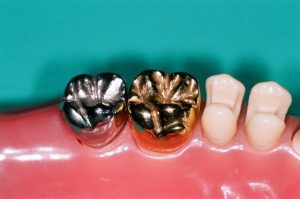
partially veneered
- only the area facing the cheek or lip is veneered white
- is subsidized by the statutory health insurance
- Aesthetic restriction
- may have increased thermal conductivity
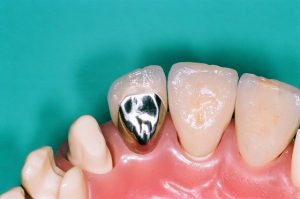
fully veneered
- is also veneered in the area of the tongue
- Less aesthetic impairment
- Limited light transmission due to the metal substructure

purely ceramic
- Very high aesthetic satisfaction, but higher time and technical expenditure
- Very good translucency and transparency (camelion effect)
- High breaking strength due to gluing process
- Very good biocompatibility, i.e. tissue-friendly and non-irritating
- Subsidy from statutory health insurance is available, but your own contribution is higher
- also possible on the same day with Cerec direct fabrication
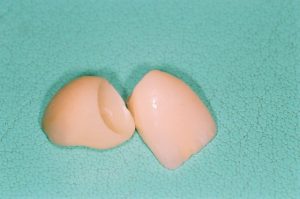
and crowns on implants
- All of the above restorations are also possible on single or multiple implants
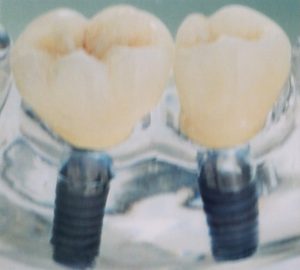
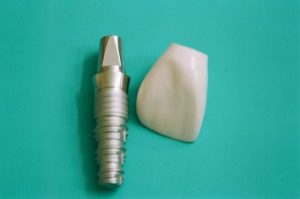

If several teeth are missing, for example, spaced implants can also be restored with a bridge.
I will be happy to advise you so that you can decide which of the options listed above suits you best!
Bridges
Restoring chewing function with a bridge on your own abutment teeth is the conventional option without implants. At least two abutment teeth are required for this. A metal framework is usually coated with tooth-colored material. A bridge consists of ceramic veneering materials, with which the occlusal surfaces can be recreated in a natural way. Bridges are fixed dentures and are very comfortable to wear. A foreign body sensation is no longer noticeable after a short time.
Advantages
- Bridges made of pure metal are very rare today, but they still fulfill their purpose
- High stability
- fixed
- Health insurance subsidy
Disadvantages
- at today’s gold prices, the costs could possibly be higher than a partially or fully veneered construction
- Increased thermal conductivity
- Low aesthetic satisfaction
- Production in external laboratory, approx. 8-10 working days
- Transitional period with a temporary solution
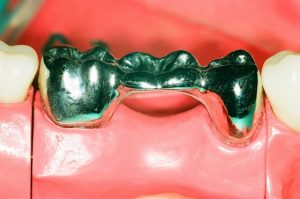
Advantages
- blinded towards the cheek
- is subsidized by health insurance
- more cost-effective than fully veneered bridges
Disadvantages
- metallic edges or occlusal surfaces can be seen
- Increased thermal conductivity
- High metal content
- Aesthetically not always satisfactory
We differentiate:
unblinded
- made of yellow or silver-colored gold alloy or non-precious metal (non-precious metal)
- Long experience, high durability and long service life
- Higher conductivity under temperature influences
- aesthetic loss
- High material usage of metal
- Health insurance subsidy
- good chewing comfort
partially veneered
- only the area facing the cheek or lip is veneered white
- is subsidized by the statutory health insurance
- Aesthetic restriction
- may have increased thermal conductivity
fully veneered
- is also veneered in the area of the tongue
- Less aesthetic impairment
- Limited light transmission due to the metal substructure
purely ceramic
- Very high aesthetic satisfaction, but higher time and technical expenditure
- Very good translucency and transparency (camelion effect)
- High breaking strength due to bonding process
- Very good biocompatibility, i.e. tissue-friendly and non-irritating
- Subsidy from statutory health insurance is available, but your own contribution is higher
- also possible on the same day with Cerec direct fabrication
and crowns on implants
- All of the above restorations are also possible on single or multiple implants
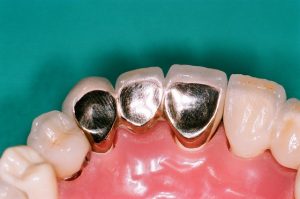
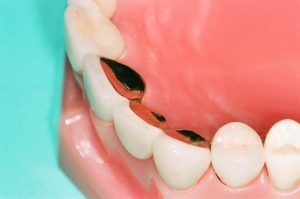
Bridges that have a metal core (precious or non-precious metal) as the inner framework can also be completely veneered.
Advantages
- Greater aesthetic alignment with nature
- no thermal conductivity to be felt
- Hardly any metal edges to be seen
Disadvantages
- low translucency
- Veneers in the upper jaw from the 5th tooth and in the lower jaw from the 4th tooth are no longer covered by statutory health insurance, which is why these costs must be borne privately and are not subsidized.
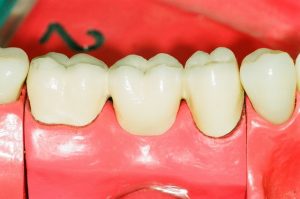
Advantages
- Realization of the highest aesthetic demands
- Very tissue-compatible
- Little plaque build-up due to very smooth surface
- High translucency
Disadvantages
- Not yet suitable for very long spans
- Despite a subsidy from the statutory health insurance fund, increased private contribution to costs
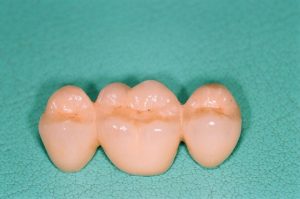
If implants are used as dental abutments, almost any of the types described here can be used for fixed and removable dentures.
Advantages
- outstanding aesthetics
- little loss of substance
- High biocompatibility, i.e. tissue-compatible
- Very smooth ceramic surface, little plaque build-up
- Restoration for incisal edge or corner fractures
- Widening of pivot teeth or teeth that are too narrow
- Color, shape and axis corrections
- High transparency and translucency
- Tooth extensions possible
- Aesthetic improvement in the case of large fillings or unsightly discoloration of your own tooth structure
Disadvantages
- Mostly cosmetic corrections, then no subsidy from statutory health insurance companies
- High treatment costs
- High technical effort
- High time expenditure
- Specialized skills of the treating dentist and dental technician required

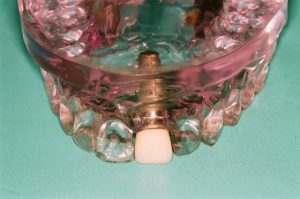
Adhesive bridges (Maryland bridges)
These are used when a conventional gap closure with a bridge is to be avoided, e.g. when two healthy adjacent teeth are present.
Advantages
- No significant loss of substance due to grinding of neighboring teeth
- Can also be used for adolescents (large dental nerve)
- Particularly applicable in the case of non-attachment or loss of individual teeth
- No damaging irritation to the gum line
- Indication also possible in periodontally damaged teeth
- Retention of a gap as a fixed space maintainer, e.g. for orthodontic treatment
Disadvantages
- Caution with very strong chewing pressure
- No translucency
- Attachment by bonding to the adjacent teeth
- Costs may have to be covered privately
Veneer’s
Veneers are very thin ceramic shells (facets) that are attached to the patient’s own teeth, usually in the front and canine teeth, using a special bonding process. As very little tooth structure has to be sacrificed, they are an elegant way of correcting many cosmetic disharmonies.
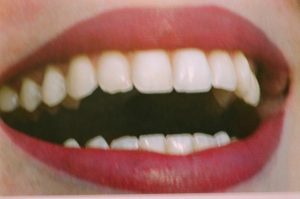
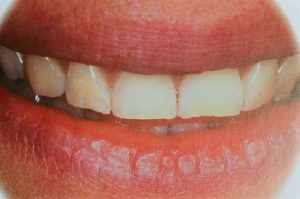
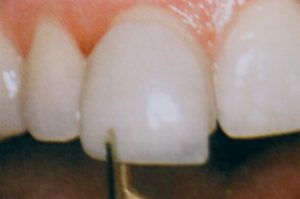
Cerec
Ceramic dentures are produced and fitted directly in our practice in just one day using a digital scan without the need for a classic impression. This means high-quality dentures such as ceramic inlays, partial crowns, full crowns and bridges. We work with the innovative CEREC system from Sirona.
CEREC stands for Chairside Economical Restoration of Esthetic Ceramics and is a CAD/CAM method. The system essentially consists of a computer, a grinding machine and a special intraoral 3D camera. This is used to take a digital impression. The tooth to be restored is measured. An optical, three-dimensional image of the oral situation is created. This information is transferred directly from the camera to the computer. The shape of the prepared tooth is transferred to the connected milling unit. This is the so-called CAD process (Computer Aided Design). Unpleasant impressions are no longer necessary. The information is then transferred to the connected grinding unit, which then grinds out the desired reconstruction from an appropriately sized ceramic block. This is known as the CAM process (Computer Aided Manufacturing).
This is followed by painting and glaze firing, an absolute must for this process!
Advantages:
- provision in just one day
- no wearing of temporaries
- no classic impression taking with trays and soft impression material in the mouth
- optimal treatment of patients with gag reflexes
- metal-free and biocompatible
- absolute accuracy of fit
- very esthetic and good surface feel
- high resilience
- usually more time efficient and more economical
- long service life
This new method gives us the opportunity to provide you with effective and optimal care.
See for yourself!



